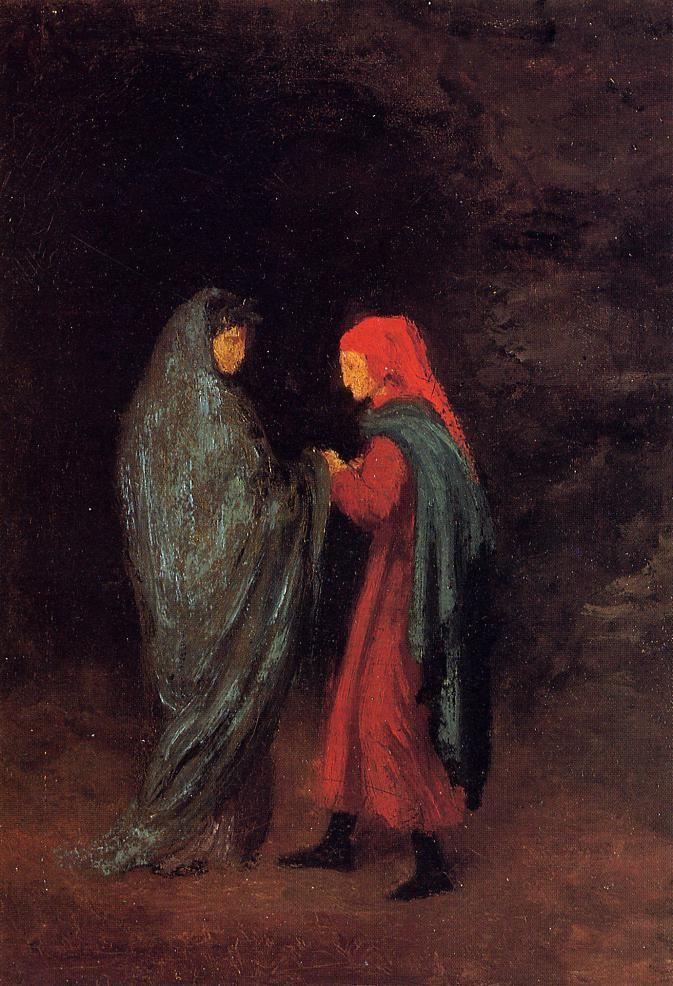Description
The painting "Dante and Virgil at the Entrance to Hell" by Edgar Degas is a masterpiece of French Impressionism depicting a scene from the epic poem "The Divine Comedy" by Dante Alighieri. The work was created in 1857 and is currently in the Musée d'Orsay in Paris.
Degas' artistic style is characterized by his impressionist technique, which focuses on capturing light and movement in the scene. In this painting, we can see how the artist uses loose, vibrant brushstrokes to create a sense of movement and depth in the scene.
The composition of the work is impressive, as Degas manages to create a sense of depth and perspective in the scene. We can see how the characters are located in different planes, which creates a sense of depth in the painting.
Color also plays an important role in the work, as Degas uses a dark and gloomy color palette to represent Hell. The red and orange tones in the background create a feeling of heat and fire, while the blue and green tones in the characters create an interesting contrast.
The story behind the painting is fascinating, as Degas was inspired by Dante's epic poem to create this work. The scene represents the moment in which Dante and Virgil enter hell and meet the damned. Degas manages to capture the tension and drama of the scene in an impressive way.
Also, there are little-known aspects of the painting that make it even more interesting. For example, Degas is believed to have used real models to create the characters in the play, adding a touch of realism and authenticity to the scene.

